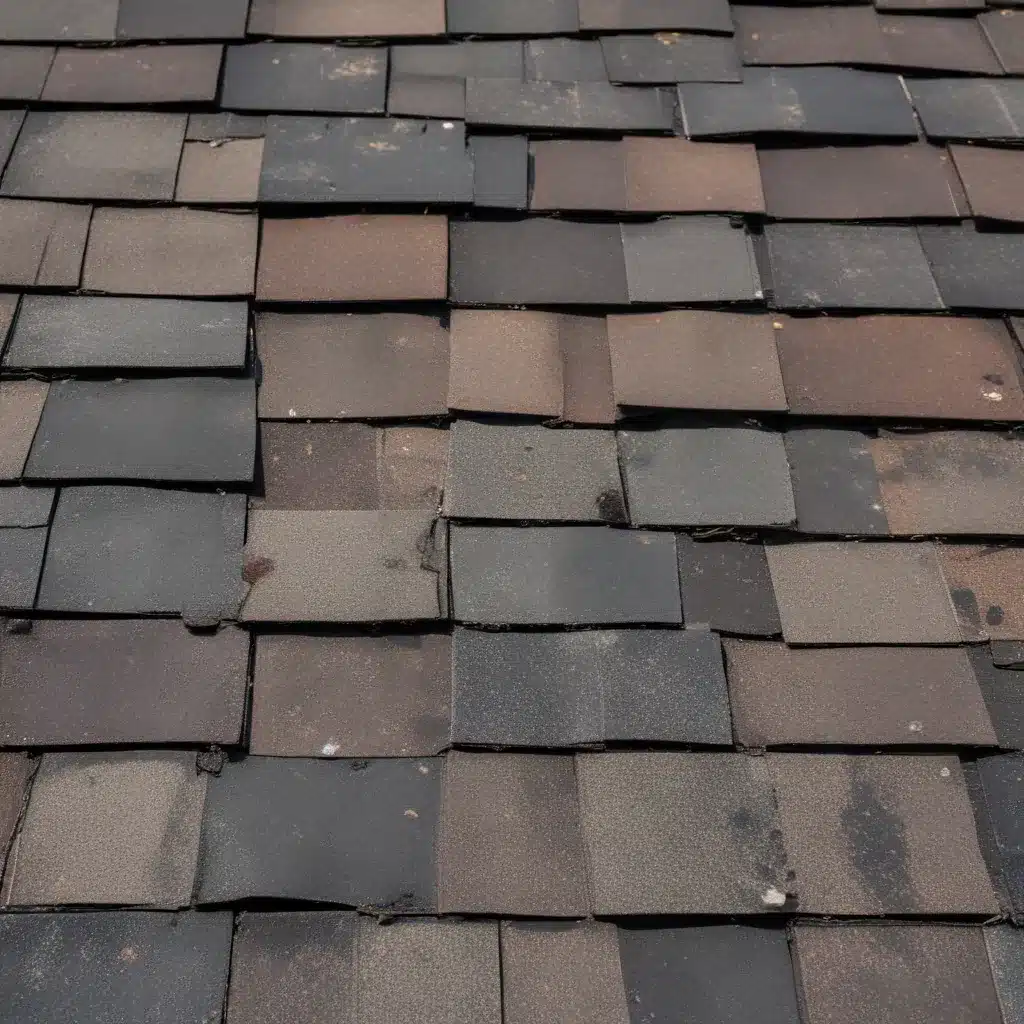
Identify and Address Roof Damage Quickly
As a seasoned roofing professional, I understand the importance of swift action when dealing with storm-related roof damage. Whether it’s a sudden downpour, a hailstorm, or high winds, the impact on your home’s roof can be significant and require immediate attention. In this comprehensive guide, I’ll share practical DIY tips and in-depth insights to help you tackle minor roof repairs and protect your property until a more permanent solution can be implemented.
Assess the Damage
The first step in addressing storm-related roof damage is to conduct a thorough inspection. Start by visually examining your roof from the ground, looking for obvious signs of trouble, such as missing or cracked shingles, dented or displaced metal panels, or visible leaks. If you feel comfortable and have the necessary safety equipment, consider climbing up to the roof for a closer look. However, exercise caution, as roofs can be slippery and dangerous, especially after a storm.
Temporary Roof Repair Solutions
In cases of minor damage, there are several DIY-friendly, temporary roof repair options you can consider to quickly address the problem and prevent further issues. These quick fixes can buy you valuable time until you can arrange for a professional roofing contractor to visit and provide a more comprehensive solution.
Flex Tape or Sealants
One of the most versatile and effective temporary roof repair solutions is Flex Tape or similar sealant products. These self-adhesive, waterproof tapes can be easily applied to patch small holes, cracks, or gaps in your roof. They create a strong, watertight seal that can withstand the elements until a permanent repair can be made. Be sure to clean the affected area thoroughly before applying the tape, and follow the manufacturer’s instructions for optimal results.
Roof Patch Compounds
Another option for quick DIY roof repairs is the use of specialized roof patch compounds. These products, often in the form of caulks or sealants, can be applied directly to the damaged area to fill in cracks, seal leaks, and protect the underlying roofing materials. Look for roof patch compounds that are compatible with your specific roofing material, whether it’s asphalt shingles, metal, or another type of roofing system.
Temporary Roof Tarps
If you have more extensive roof damage, such as a large hole or a section of missing shingles, consider using a temporary roof tarp to create a waterproof barrier. Secure the tarp firmly to the roof using construction adhesive, roofing nails, or other appropriate fasteners. This solution can provide temporary protection until a permanent repair can be made.
Prioritize Safety
When tackling any DIY roof repair, safety should be your top priority. Ensure you have the proper personal protective equipment (PPE), such as non-slip shoes, gloves, and a safety harness if working at heights. Avoid working on the roof during inclement weather, and always have someone nearby to assist you or call for help if needed.
Communicate with Your Insurance Provider
If the storm damage is more extensive, you may need to file an insurance claim to cover the cost of repairs. It’s important to document the damage thoroughly and communicate openly with your insurance provider. Some insurers may require a professional inspection before approving a claim, so be prepared to provide detailed information about the extent of the damage and the temporary measures you’ve taken.
Seek Professional Assistance
While DIY roof repairs can be a viable option for minor issues, it’s always best to have a qualified roofing contractor inspect your roof and provide a long-term solution. At Roofers in Northampton, our team of experienced professionals can assess the damage, recommend the most suitable repair or replacement options, and ensure your roof is restored to its full functionality and weather-resistant capabilities.
Protecting Your Roof from Future Storm Damage
Implementing proactive maintenance and repair strategies can help reduce the impact of future storm-related roof damage. Regular inspections, timely repairs, and the use of durable roofing materials can all contribute to the longevity and resilience of your home’s roof.
Routine Roof Inspections
Schedule regular roof inspections, at least once or twice a year, to identify and address any potential issues before they escalate. During these inspections, look for signs of wear and tear, such as cracked or missing shingles, loose fasteners, and signs of water intrusion. Addressing these problems promptly can prevent more significant damage down the line.
Upgrading Roofing Materials
If your roof is nearing the end of its lifespan or has sustained substantial damage, consider upgrading to more durable roofing materials that can better withstand the effects of severe weather. Metal roofing, for example, is known for its exceptional resistance to wind, hail, and impact damage. Speak with a roofing professional to explore the best options for your home and budget.
Preventive Maintenance
In addition to routine inspections, implement regular preventive maintenance practices to keep your roof in top condition. This may include clearing debris from gutters and downspouts, trimming overhanging tree branches, and applying protective sealants or coatings to enhance the roof’s weather-resistance.
By combining quick DIY fixes with proactive maintenance and professional assistance, you can effectively address storm-related roof damage and safeguard your home against future weather-related challenges. Remember, a well-maintained roof is not only a matter of aesthetic appeal but also a crucial component in protecting your property and ensuring the safety of your family.

